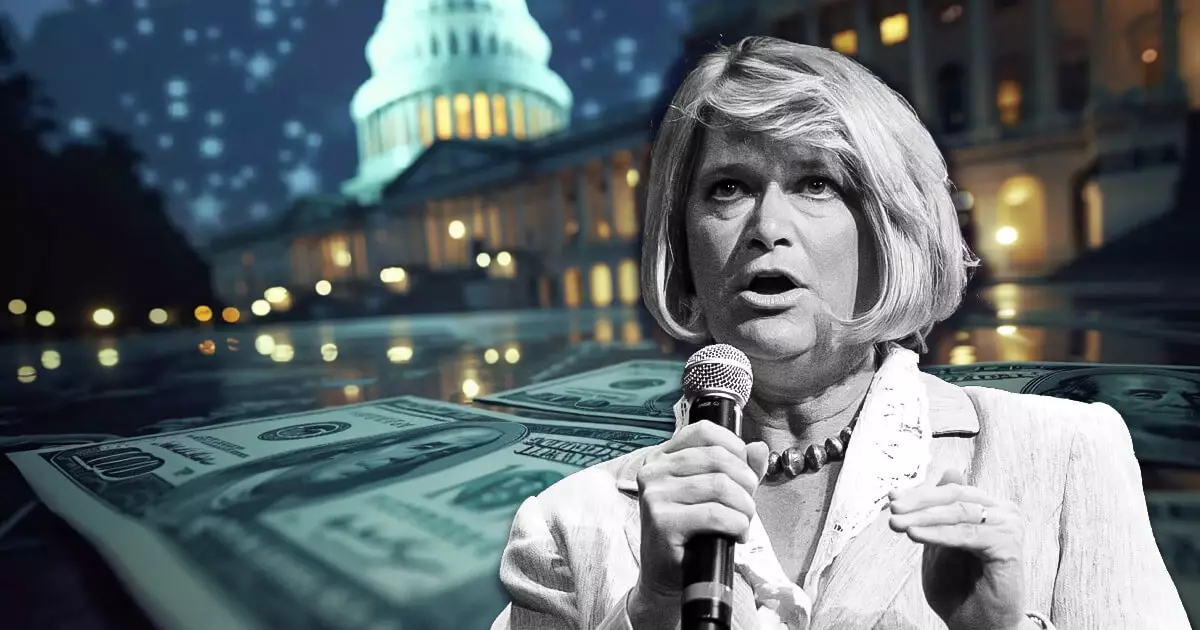The recent confirmation of Michelle “Miki” Bowman as Vice Chair for Supervision at the Federal Reserve signals a promising turning point for the intersection of finance and technology in America, particularly for digital assets. With a narrow Senate vote of 48-46, Missouri Senator Cynthia Lummis articulated the significance of Bowman’s role, indicating that her leadership could illuminate a path toward a more progressive regulatory framework for cryptocurrencies. Lummis’ endorsement can only be described as fervent; she believes that Bowman’s commitment to “evidence-based regulation” marks a clear divergence from the politically-motivated decisions that have historically sullied the sector.
What makes Bowman’s ascent particularly compelling is not merely her title, but her strong track record and favorable stance towards innovation in finance. The implications of her role extend beyond mere oversight, marking a significant enhancement in how banks can interact with the burgeoning world of digital assets. Bowman’s appointment comes amid a pressing need for digestible, well-structured regulatory frameworks that embrace rather than stifle innovation in the crypto space.
The Era of Sensible Innovation
During her nomination hearing, Bowman made it abundantly clear that she believes U.S. banks must adapt to remain competitive in an increasingly digitized financial landscape. Her vision is not about laissez-faire mechanics, but about “sensible innovation.” This is a critical distinction; robust regulatory measures do not have to equate to stifling entrepreneurial spirit. Instead, Bowman can potentially usher in a balanced approach that promotes growth while maintaining the integrity and stability of the existing financial system.
In a political atmosphere where regulations often lean toward heavy-handed control, this nuanced stance could serve as a balm for an industry that has faced regulatory headwinds, experiencing pushes and pulls that have left stakeholders disoriented. Bowman’s perspective aligns seamlessly with the sentiments of considerate progressives who advocate for a future that is both technologically advanced and economically sound.
Bridging the Gap for Emerging Technologies
Historically, the Federal Reserve’s role has been more about economic stability than direct oversight of cryptocurrencies. However, Bowman’s focus on new technologies implies a bridging strategy that engages digital assets on an infrastructural level, relevant for financial institutions and consumers alike. By engaging with stablecoin issuers and blockchain technologies, the Fed, under Bowman’s guidance, is poised to refine its approach toward integrating digital assets into everyday financial activities.
This shift is both timely and necessary, as financial institutions have been grappling with how to adopt cryptocurrencies without jeopardizing their operational models. The Fed’s custodial approach under Bowman could pave the way for banks to responsibly incorporate digital assets into their offerings. This relationship is crucial, as it can help streamline services such as custody and settlement, ultimately fostering an ecosystem where innovation can thrive within a regulatory framework.
The Industry’s Enthusiasm and the Broader Implications
Bowman’s confirmation has not just been met with cautious optimism but enthusiastic support from major stakeholders within the industry. Organizations like the Crypto Council for Innovation, which groups together leading firms such as Coinbase and Fidelity, have rallied around her nomination, citing her extensive experience in community banking and technology embrace. This support suggests that trust is being placed in Bowman’s ability to navigate the tricky waters of financial innovation, as she is seen as an ally rather than an adversary.
The broader implications of her leadership cannot be understated. As Congress deliberates various bills aimed at bridging regulatory gaps, Bowman’s role could make her a pivotal figure in legislative conversations about custodial services and stablecoin regulations. Her commitment to thoughtful engagement with the digital asset landscape leaves room for a more structured approach, one that nurtures growth while safeguarding consumer interests.
Charting a New Course for Crypto Policy
In an era when uncertainty looms over regulatory policies tailored to digital assets, Bowman’s confirmation represents a tangible shift toward a forward-thinking paradigm. The intersection of finance and digital technology has become a crucial battleground within the broader political economy, making her appointment not just relevant but essential. If she indeed follows through on her commitment to sensible innovation, it could signify the dawn of a new age in how cryptocurrencies and related technologies are treated within the framework of American finance.
In these crucial times, a comprehensive, reasonable, and future-oriented regulatory approach is paramount. This could yield a more streamlined integration of digital currencies into the mainstream economic framework, benefiting not only the innovators but also the consumers who will ultimately partake in this evolving financial narrative. As we stand on the cusp of change, the crypto community watches with bated breath, hoping that Bowman’s tenure will spark genuine progress.
















Leave a Reply